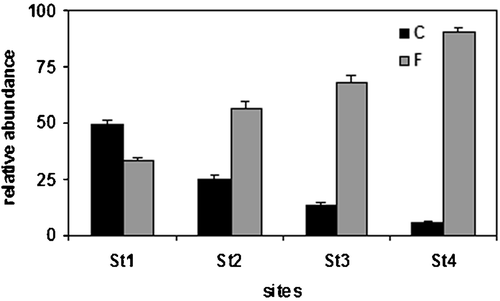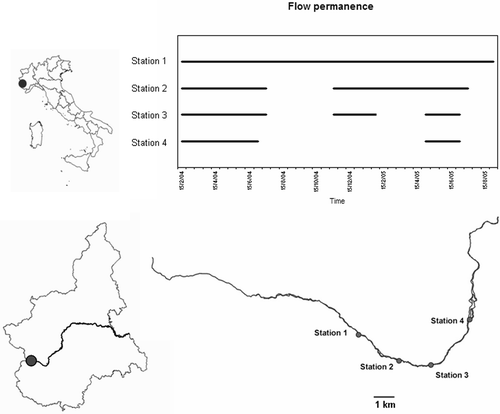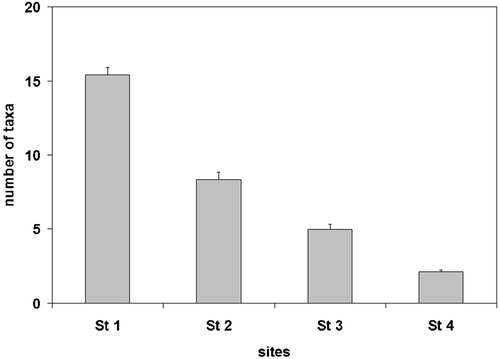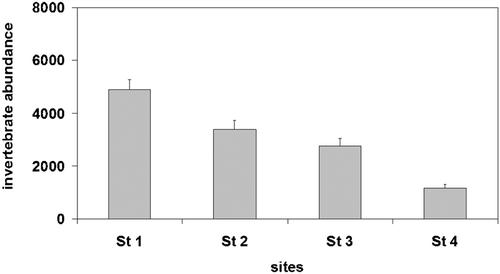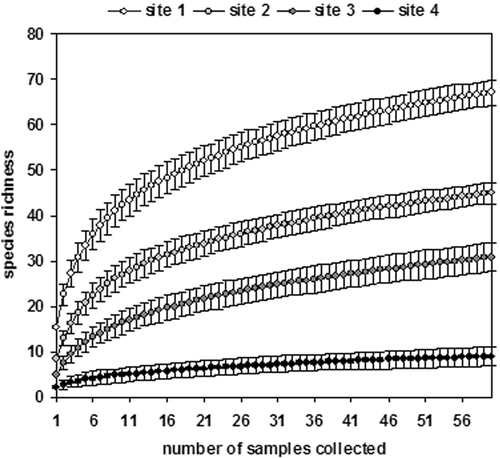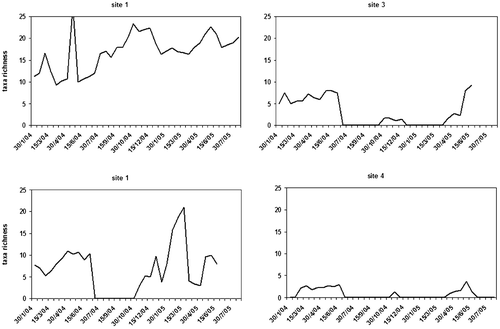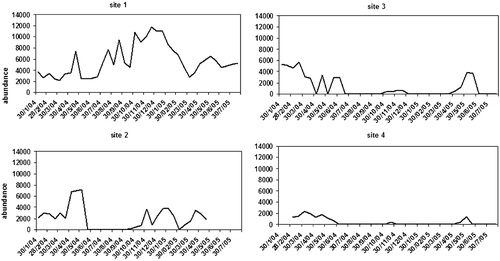Figures & data
Table I. Main physical factors in the four stations of the Po river.
Table II. Main chemical parameters in the four stations of the Po river.
Table III. List of macroinvertebrates collected in the natural riverbed of the four stations. Biological and ecological traits are given according to Usseglio‐Polatera et al. (Citation2000); Functional Feeding Groups according to Merritt and Cummins (Citation1996).
Figure 4. Percent functional composition of the four station(upper left) and relative importance of the five Functional Feeding Groups in the four stations (Cg = Collectors–gatherers; F = Filterers; P = Predators; Sc = Scrapers; Sh = Shredders).
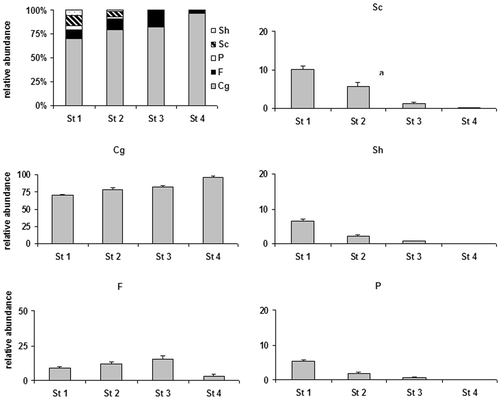
Figure 5. Relative importance of taxa belonging to different‘biological groups’ in the stations 1 and 4, according to Usseglio‐Polatera et al. (Citation2000).
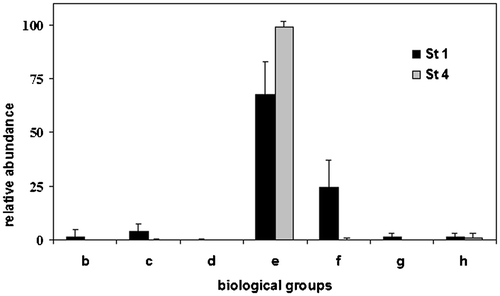
Figure 6. Differences among the four station in the presence of the representative‘ecological groups’ C and F.
